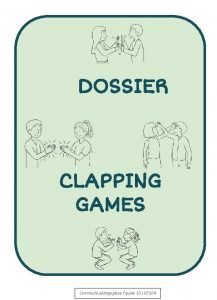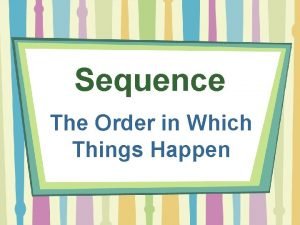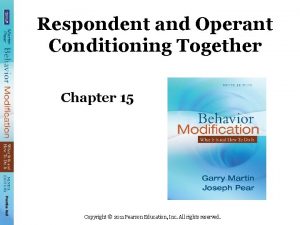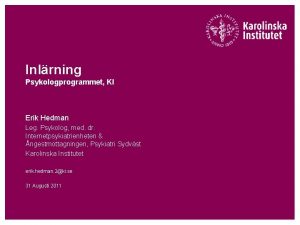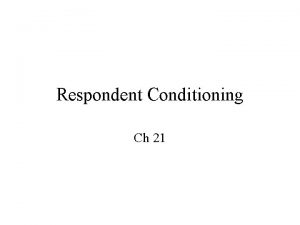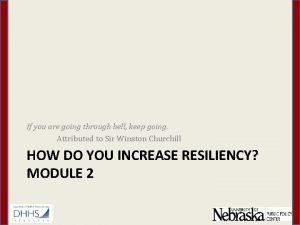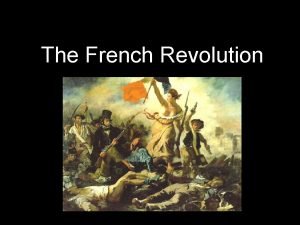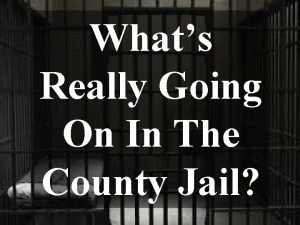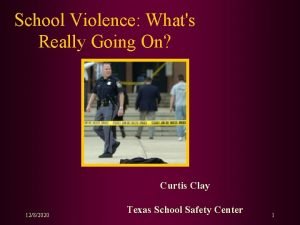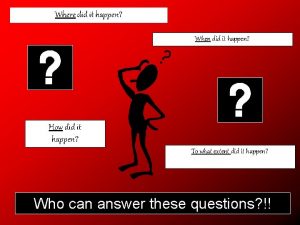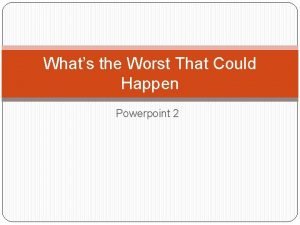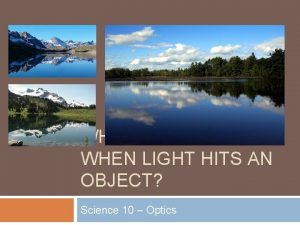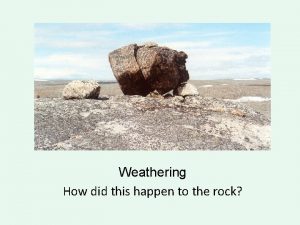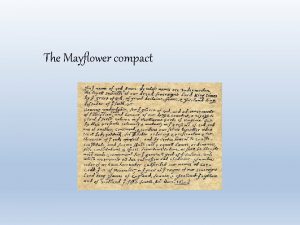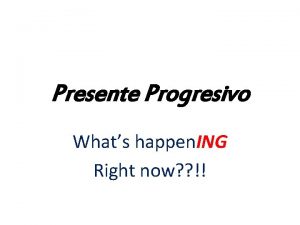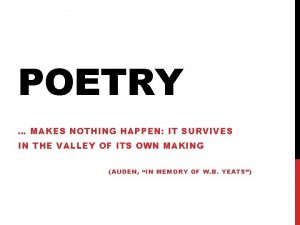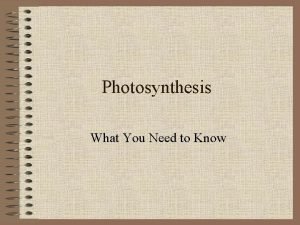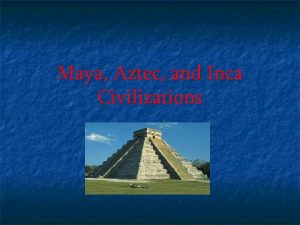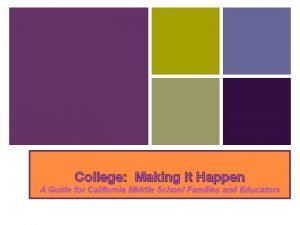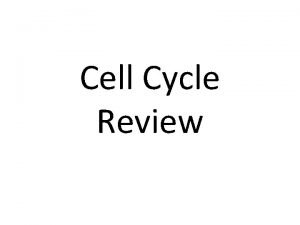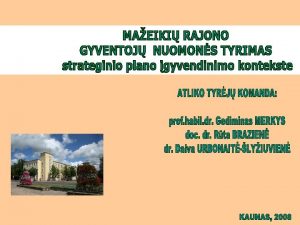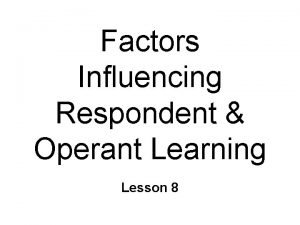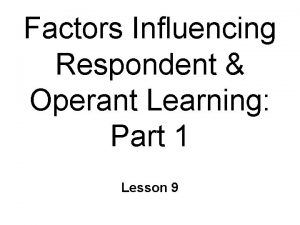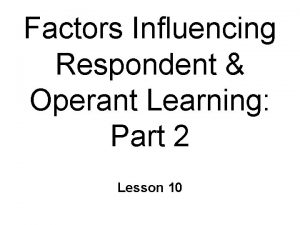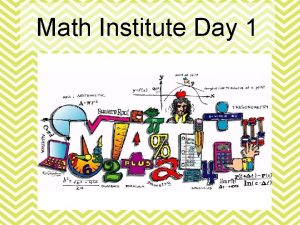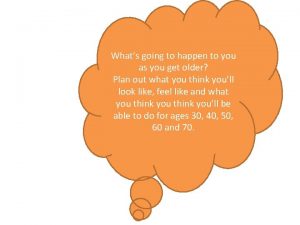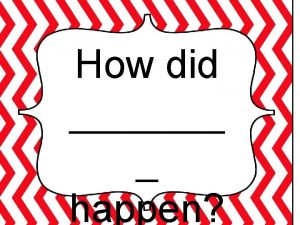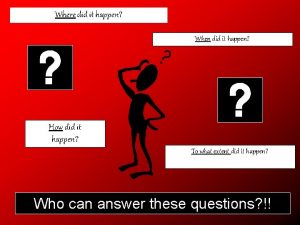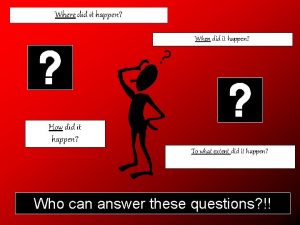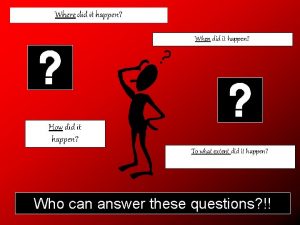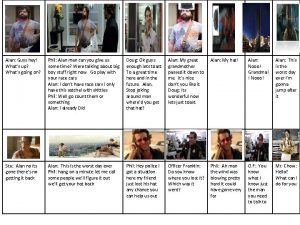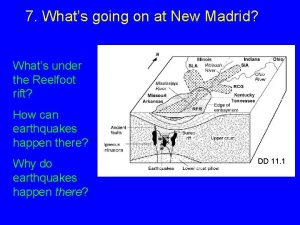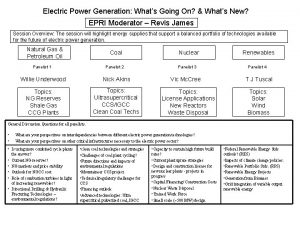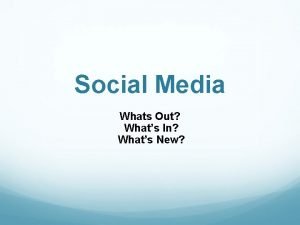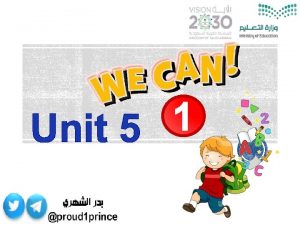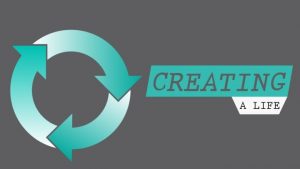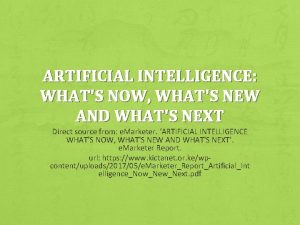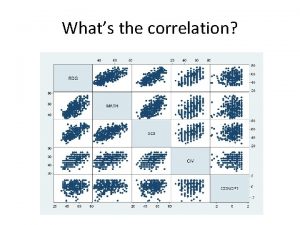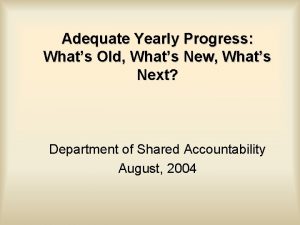Respondent Learning Lesson 4 Whats going to happen




























- Slides: 28

Respondent Learning Lesson 4

What’s going to happen next? If we know…we can be prepared l Increases our chances for success n Predicting important events critical for survival l food & water l sex l danger ~ n

Associative Learning Events become associated l linked n Association via l Respondent Learning n – (AKA: Classical or Pavlovian Conditioning) uinvoluntary l behavior Operant Learning – (AKA: Instrumental) umotivated behavior ~

Associative Learning Respondent learning l Elicited (involuntary) behavior l Triggered by external events l Learned “reflexes” n Operant learning l Emitted (motivated) behavior l Attempt to change environment l Controlled by consequences ~ n

Motivation Will expend energy to achieve goal l Approach satisfiers /Avoid annoyers n What “motivates” operant behavior? l Physiological responses l Emotional responses l Cognitive response n Involuntary responses l Both innate & learned ~ n

Respondent Learning A. K. A. Classical or Pavlovian Conditioning l Ivan Pavlov l dog learned to salivate when bell rings n Throughout animal kingdom l cockroaches, sea slugs, dogs, humans ~ n

Learning Associations Signal--Important event n Based on reflexes l stimulus response l automatic (involuntary) n After association learned… l signal triggers response ~ n

Eye-blink Reflex Puff of air eye blinks l prevents injury to eye l “click” precedes puff of air n Reflex l inherited l stimulus response l automatic ~ n

Respondent Learning: Eye-blink signal stimulus response “Click” Air puff Eye blink

After Learning Occurs signal “Click” Eye blink Learned response Anticipatory response

What is learned? Relationship between events l Predicts biologically important events n What kind of responses can be learned (conditioned)? l Physiological Responses l Emotional Responses l Expectancies ~ n

Unconditional Stimulus (US) Part of reflex l automatically elicits a response n Biologically important l motivational significance l food, sex partner, drugs l physical trauma, toxins ~ n

Unconditional Response (UR) Response to US l Automatic response l Reflexive n Physiological & emotional responses l HR/temp. - sexual arousal/pleasure l Pain/nausea – fear/anxiety ~ n

Examples: US URs Good food in mouth salivation, chewing, swallowing, pleasure Bad food in mouth gagging, spitting, disgust Loud noise HR, flinch, orient, fear Dust in nose/throat sneeze/cough, anxiety Animal bite pain, withdrawal, fear

Reflexive Behavior Unconditional stimulus Bite Unconditional response Pain/fear

Conditional Stimulus (CS) Initially neutral stimulus (NS) l does not trigger UR of interest n Reliably precedes US l Cue or signal ~ n

Conditional Response Learned response l in response to CS only l usually similar to unconditional response l homogeneous n After many pairings of CS & US l learning is usually gradual l frequency important ~ n

Respondent Learning Conditional Stimulus See dog : US UR bite Pain/fear

After Respondent Learning Conditional Stimulus only See dog Fear Conditional Response Anticipatory response

Milk Let-down Response n Feeding reflex l baby suckling milk released US UR Potential CSs l crying, time of day, holding baby, etc l precede suckling predictably l act as CS trigger milk release (CR) n Generalization? l another baby crying ~ n

Extinction: Respondent Learning n CS no longer followed by US l Loses predictive value l Behavior becomes weaker : Fear

Conditioned Emotional Responses Affect l positive & negative n Depends on experiences l subjective interpretation of physiological responses n Expectations l Conditioned emotional response n u. CER ~

Conditioned Emotional Responses Classes of stimuli l appetitive l aversive n CS predicts important event (US) l CS+ US will occur n u l Positive contingency CS- US won’t occur u negative contingency ~

CER (affect) CS+ Positive Negative CS- Negative Positive Appetitive (satisfier) Aversive (annoyer) US

Likes & Dislikes Like l Cues associated w/ satisfying events n Dislike l Cues associated w/ annoying events n Expectation + Contingency + US l CS+/CS- and appetitive/aversive ~ n

CER (Likes/Dislikes) CS+ CS- Like Dislike Like Appetitive (satisfier) Aversive (annoyer) US

Food Preferences Genetic component l Taste receptors l Salty, sweet, bitter, sour, *savory l Or blend of these tastes n Learned component l Taste as CS l Nutrients as US n Preference for sweet/salty innate l Can be altered by experience ~ n

Thiamine & Open Eating Systems Thiamine (vitamin B 1) l Tasteless & odorless l Beri beri heart, neural disorder n Rats with B 1 deficiency l Prefer tastes of foods w/B 1 l Avoid tastes of foods w/o B 1 n Taste preferences learned l Associated w/ vital nutrients ~ n
 Tic tac toe going high going low going criss cross lollipop
Tic tac toe going high going low going criss cross lollipop The order in which things happen is called
The order in which things happen is called Operant respondent
Operant respondent Psykologprogrammet ki
Psykologprogrammet ki Respondent vs operant conditioning
Respondent vs operant conditioning Going through hell
Going through hell Cuadro comparativo e-learning y b-learning
Cuadro comparativo e-learning y b-learning Whats going on in
Whats going on in What is in this picture
What is in this picture Tell me whats really going on
Tell me whats really going on Tell me whats really going on
Tell me whats really going on Whats hot whats not
Whats hot whats not Where did it happen?
Where did it happen? What's the worst that could happen comprehension questions
What's the worst that could happen comprehension questions What happens when light hits an object you can see?
What happens when light hits an object you can see? Which type of weathering
Which type of weathering Where did the mayflower compact happen
Where did the mayflower compact happen What condition threatens peeta's life
What condition threatens peeta's life Happen en presente continuo
Happen en presente continuo Poetry makes nothing happen analysis
Poetry makes nothing happen analysis Where does photosynthesis take place
Where does photosynthesis take place Tenochtitlan today
Tenochtitlan today In what section of earth do earthquakes happen?
In what section of earth do earthquakes happen? Tap water
Tap water Want 2. ve 3. hali
Want 2. ve 3. hali Explanation text rainbow
Explanation text rainbow New moon facts
New moon facts College make it happen
College make it happen Cytokinesis is about to happen
Cytokinesis is about to happen
